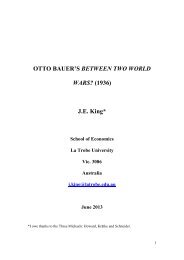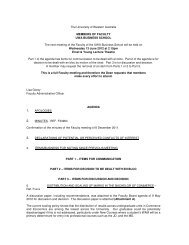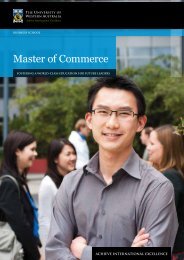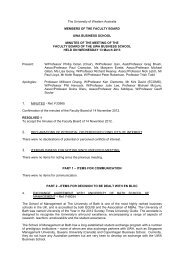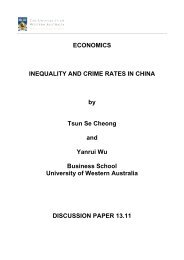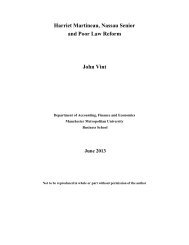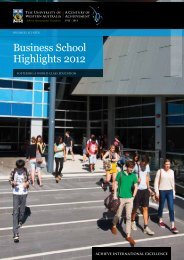A Dynamic Model for determining Inward Foreign ... - Business School
A Dynamic Model for determining Inward Foreign ... - Business School
A Dynamic Model for determining Inward Foreign ... - Business School
You also want an ePaper? Increase the reach of your titles
YUMPU automatically turns print PDFs into web optimized ePapers that Google loves.
investors look <strong>for</strong> the markets which provide accurate and quick in<strong>for</strong>mation in an<br />
appropriate time in order to control their investments (Amman financial market, 2009).<br />
Public shareholding companies were set up and their shares were traded in long be<strong>for</strong>e the<br />
setting up of the Jordanian securities market. In the early thirties the Jordanian public<br />
already subscribed to and traded in the shares. For example, Arab Bank was the first public<br />
shareholding company to be established in Jordan in 1930, followed by Jordan Tobacco and<br />
Cigarettes in 1931, Jordan Electric Power in 1938 and Jordan Cement Factories in 1951. In<br />
the 1975 and 1976, the Jordan Central Bank cooperated with the World Bank’s<br />
International Finance Corporation to establish the Amman financial market (Amman<br />
financial market, 2009).<br />
Jordan has done well in catching the attention of <strong>for</strong>eign investors as a consequence of<br />
numerous factors, such as internal and external political stability, supported investment<br />
legislations, privatisation plans, advanced private sectors, joining and merging with a<br />
variety of unilateral, bilateral and multilateral trade agreements. Moreover, <strong>for</strong>eign capital<br />
has been attracted by some factors such as the legal system, developed infrastructure, cheap<br />
and skilled labour, and feasible projects to be undertaken (Investment Encouragement<br />
Corporation, Amman, Jordan).<br />
The rest of the paper is organised as follows: section 2 describes the literature review and<br />
theoretical framework and hypotheses. Section 3 presents the research methodology<br />
including research models, the mechanism used to measure the extent of risk, data analysis<br />
method and methods of gathering data. Section 4 shows the results and discussion and<br />
section 5 conclusion.<br />
2. Theoretical Framework and Review of Literature on FDI and Country Risk.<br />
Numerous studies have analysed the relationship between FDI, country risk,<br />
macroeconomic factors and stock market price to determine the extent, if any, to which<br />
country risk influences FDI in host economies. The assumption common to these studies is<br />
that country risk affects inward FDI. Overall, conclusions have been mixed, but most<br />
research find that country risk prevent FDI to flow into hot countries. The differences in the<br />
findings could arise from a number of methodological and conceptual factors such as lack<br />
of comprehensive, different definitions of FDI and different econometric specifications.<br />
3




